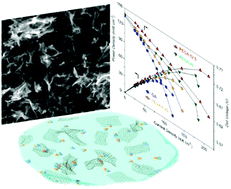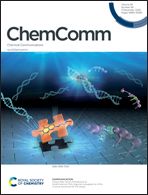Pore engineering of graphene aerogels for vanadium redox flow batteries†
Abstract
The all-vanadium redox flow battery is considered to be a dispersive and non-perennial energy source due to its grid reliability, high efficiency, standalone modular design, and excellent cycling stability. However, the large vanadium ionic size and relatively high viscosity lead to poor compatibility with most carbon-based microporous electrodes, resulting in sluggish mass diffusion and unsatisfied capacitance retention. Herein, a novel cross-coupled porous graphene aerogel is proposed via the NaNO3-template pore engineering strategy. The microscopic observations and N2 adsorption–desorption isotherms validate the successful regulation of the surface area and porous structure, with the addition of different porogen contents (6.25–25 g L−1). The vanadium redox flow battery delivers a specific capacity of 163.4 mA h g−1 (5.6 A h L−1) at a current density of 25 mA cm−2, surpassing most previously reported batteries with a similar reactor volume. This method holds great promise for the better design and preparation of porous electrodes, and potential suitable applications.



 Please wait while we load your content...
Please wait while we load your content...